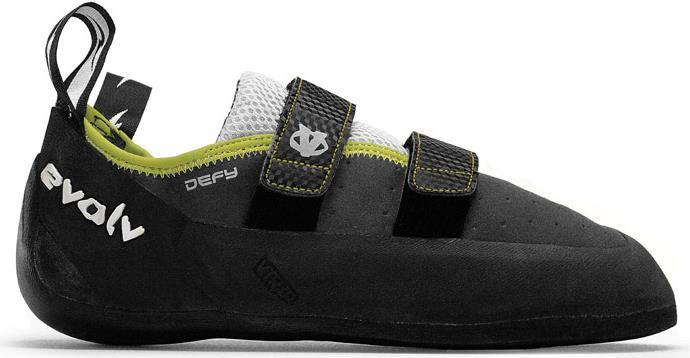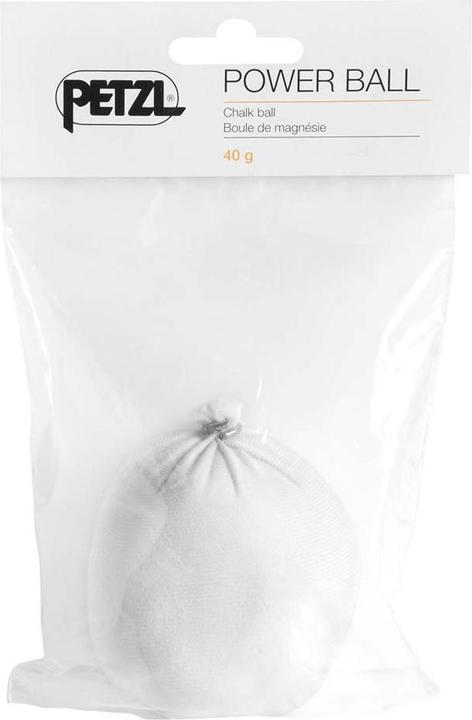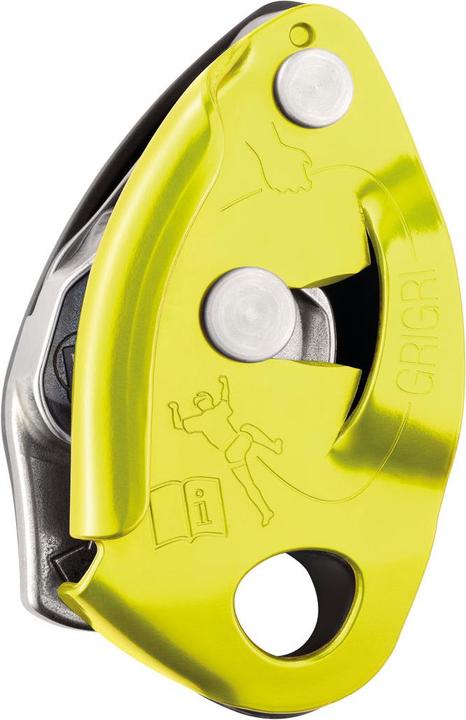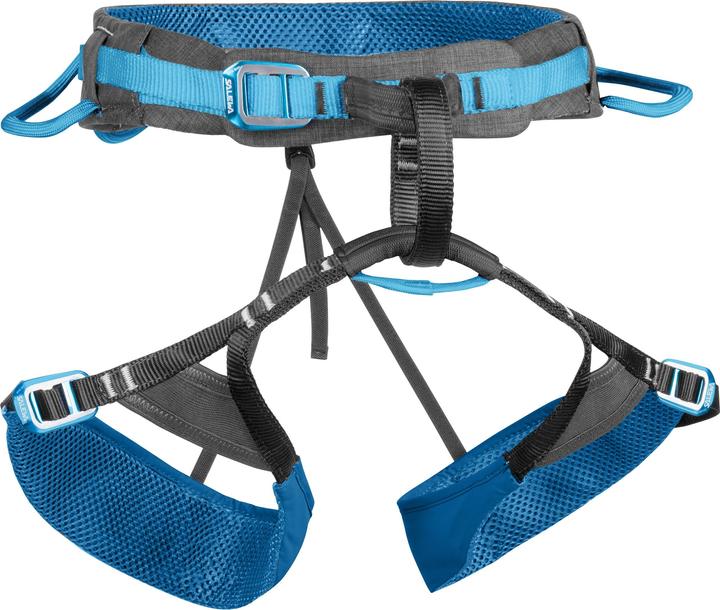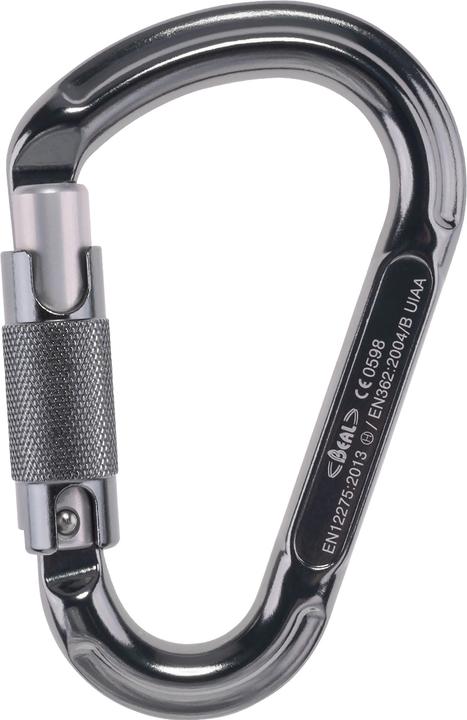

A passion for climbing - a world like no other
Andreas Trunz is Brand Representative and Sales Coordinator for the Salewa climbing brand. But above all he is a passionate and experienced climber. In an interview, Trunz plunges us into the exceptional world of climbing and tells us where his passion for this "vertical sport" comes from.
Where does rock climbing come from?
I'm no historian, but I'd say it's difficult to give an exact date or place for its birth. It is above all a form of archaic movement that is, from an evolutionary and personal development point of view, more natural to man than his upright position, his bipedalism. Babies who climb before they can even walk are a perfect example of this.
However, the first literary mention of an ascent without any purpose whatsoever is often stated in this context. This was accomplished on Mont Ventoux by the Italian poet Francesco Petrarca in 1336.
The origins of the sport itself, i.e. climbing steep rock faces for no purpose - just to climb - can be traced back to 19th century Britain in Reinhold Messner's book "100 Jahre Kletterkunst" (100 Years of Climbing). As early as 1826, difficult cliffs were being climbed in the Lake District of Scotland and Wales. Mountaineers such as Albert Frederick Mummery were truly famous in the 19th century, preparing for their great ascents with these activities.
What personally fascinates you about climbing?
Climbing is a sport that is practised in the great outdoors and it is above all the impressive and unforgettable sensations experienced that motivate me and encourage me to continue.
That's why, for me, climbing is closely linked to classic mountaineering like sealskin. What particularly fascinates me about climbing is the interaction between "head - hand - heart", which, in a way, boils down to this: for climbing, I need my head, i.e. reason, to read all the information provided by my environment, for safety considerations, to anticipate movements, etc. It's precisely these characteristics that allow me to be a good climber. It's precisely these characteristics that allow me, and force me, to forget everything and concentrate on the present moment. What's more, I train my body and always push it to its limits. Finally, this sport constantly confronts me with my emotional side and forces me to control my emotions, such as the fear of falling. This last aspect is essential if you want to progress.
** Where do you like to go?
** Where do you most enjoy climbing?**
I love climbing in the Alpstein, the mountain where I come from. It offers great contrasts between the picturesque countryside and the craggy limestone walls.
My passion for climbing is also a great way to travel. It has already taken me to magnificent surroundings such as Shawangunk near New York or the Peak District between Manchester and Sheffield, for example.
When did you start climbing?
My Swiss Alpine Club (SAC) membership card shows 17 years old, which means I started climbing when I was about 13. But long before that, my most extreme climbs, I was already climbing to the top of the tallest trees around.
** At what age can you start climbing and can you still learn well as an adult?**
The fact that you can start at almost any age is a feature of climbing. As soon as a child shows an interest in climbing, you can throw them up on a wall and see if they get the hang of it. Very young children have more fun swinging at the end of a rope than climbing, but that's OK. It's only too late to learn when someone finds it hard to stand.
On adult beginners' courses, I often hear phrases like, "This is the first time I've really succeeded in a sport where I don't feel like a foot when it comes to exercise!"
Do you need a lot of equipment for climbing?
It depends on the discipline. For bouldering or DWS (Deep Water Soloing) climbing, a pair of climbing shoes and a ball of chalk are enough to get you in the game. On the other hand, for Bigwall climbing (technical climbing), very few people have all the equipment they need, because you really do need a lot of it. The best-known forms of climbing are bouldering and sport climbing. Bouldering is a very accessible discipline because, apart from a fall mat, all you need is a pair of climbing shoes and a ball of chalk. For sport climbing, in addition to shoes and chalk, you'll need a harness, a rope, a helmet, a belayer and around 12 quickdraws (a set of karabiners for attaching the rope when passing through sections). However, much of this equipment, if used and stored correctly, lasts a very long time. The costs are therefore generally significant at the outset.
We often hear terms like "redpoint", "flash" or "on sight". What do they mean?
These terms all come from sport climbing. For clarity, here's an overview of the different climbing disciplines:
- ** Bouldering**: the uninsured climbing of walls. At the centre of the discipline are moves to or, even better, beyond the limits - making the impossible possible!
- Sport climbing: the best-known discipline of climbing. Often practised indoors or at walls 30 to 40 metres high. The karabiners for the split passage and the anchor points at the top are already installed. Here, too, the sporting aspect takes centre stage.
- Alpine sport climbing: like sport climbing, but on higher crags, i.e. in several pitches.
- **Alpine climbing**: here, splits often have to be placed, meaning that, in addition to sporting skills, knowledge of alpine hazards is required. In the foreground is rather the aesthetics of a wall, the line that runs along it or even the summit.
- Classical mountaineering: the experience in nature and the summit/mountain are in the foreground.
- Ice climbing: Nomen est omen.
These styles become increasingly blended as we move towards peak performance.
Sport performance is important for bouldering or sport climbing, so you need to be able to compare it. Redpoint refers to a free ascent by the climber. The quickdraws and rope only fulfil a safety purpose and are not used as an aid or as a means of rest.
<On sight is the master discipline among climbs. It means linking a route in redpoint on the first attempt without knowing its difficulties beforehand. Flash also means linking up on the first try, but with information (looking at other climbers, knowing the important holds, etc.).
Products to go with item:
You may also be interested in this article:
Interesting facts about products, behind-the-scenes looks at manufacturers and deep-dives on interesting people.
Show all